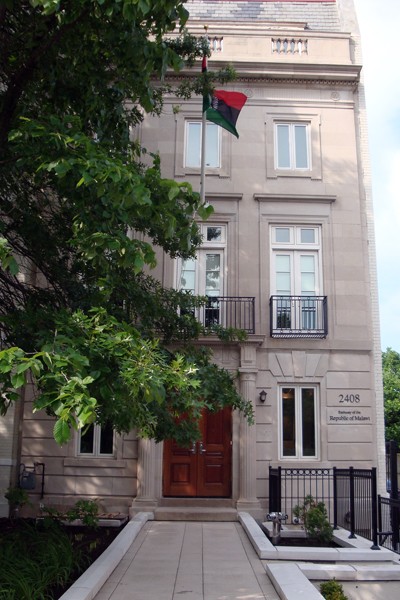
Architecture
Planning
Interiors
Graphic Design
Malawi Embassy
The Republic of Malawi
Washington, DC
The Embassy of Malawi owned an
historic townhouse on Embassy Row in the Massachusetts Ave. historic
district.
Built in three sections, portions of the building date
from the 1890’s, 1920’s and 1970’s.
The building was vacated after a fire gutted
the fourth floor and was abandoned for about a five year period, during
which time it suffered significant water damage and deterioration.
Powe Jones Architects was retained
by the Owner in 2008 to assess the building damage and to develop a scheme
to rehabilitate and renovate the building to house the Embassy.
While the exterior was largely intact, very
little of the historic interior fabric of the building remained:
the main stair, some fireplaces, limited areas
of original oak flooring and the moldings in some of the rooms fronting onto
Massachusetts Avenue.
The scheme preserved these few elements while
opening up the entire building south of the original stair to create new
office space to serve the Embassy’s needs.
Integral to the scheme was infilling a
courtyard to provide a new exit stair and elevator and then re-working the
existing stair to permit it to satisfy current, more stringent, fire-rating
requirements.
The program dictated that virtually all staff members be housed in private offices. The second floor Ambassador’s suite includes an office with sitting area, a private meeting room and Assistant’s office with waiting area with an oriel window projecting from the face of the building overlooking the adjacent Rock Creek Park. The DCM and Staff offices are on the upper two floors. Support spaces include the fourth floor library, large conference room, first floor reception room that opens onto a new terrace, a serving kitchen and Consular section with separate exterior entrance. Interior glass partitions were used extensively throughout the building to provide a greater sense of openness within the building’s limited width.
With
Powe Jones Architects PCdesign: 2008
built: 2009

